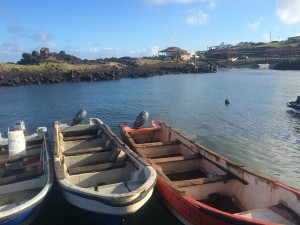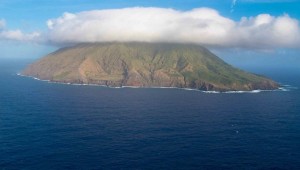With summer around the corner people start thinking of relaxing beach vacations in far off tropical destinations. But when Colorado State University researcher Rebecca Gruby packs for the islands she’s not loading a beach bag with towels and sunscreen. She’s packing digital recorders and video recording equipment to capture interviews with local people about the social and political dynamics of large marine protected areas.
Ocean conservation areas larger than 100,000 square kilometers, or 38,600 square miles, are generally considered large marine protected areas, each being designated by the country that controls the waters being protected. Although the vast majority of marine protected areas are much smaller and closer to shore, the handful of large areas account for the majority of conserved ocean area globally. While each area is unique, regulations typically limit fishing and other commercial uses to protect the area’s ecological integrity.

The race to establish these areas has been spurred in part by global marine conservation targets set by the United Nations and others. These goals address a growing number of ecological issues affecting the oceans, including declining fish stocks and marine biodiversity, increasing ocean acidification, and loss of habitats.
Huge conservation areas in and around island nations like Palau have become test cases for strict ocean protection, but enforcement of regulations is still a daunting challenge. Still, new large marine protected areas are often celebrated in the news, like the newest area established in March in Seychelles, just north of Madagascar.
While some view designating these areas as significant conservation victories, concern is mounting that without serious consideration of their social, economic and political dimensions before and after designation, the long-term success of these areas is questionable.
“A common assumption has been that human dimensions considerations aren’t relevant to large marine protected areas because they’re often located in remote, offshore areas,” Gruby, an assistant professor in the Department of Human Dimensions of Natural Resources, explained. “But these areas are unique and their human dimensions are potentially different from those we are used to. Many people have a stake in what happens even in the most remote ocean places. Those needs have to be adequately accounted for if large marine protected areas are to succeed.”

Gruby is leading a three-year research and outreach project to better understand stakeholders and interests, governance approaches, and social, political, and economic outcomes. The project includes developing case studies in Palau, Bermuda, Easter Island, Kiribati and the Commonwealth of the Northern Mariana Islands.
The group wants to demonstrate that these areas are not simply “ocean wilderness” where local people and other stakeholders have no interests and are advocating that this type of research needs to take place. The group has proposed such an agenda in “Toward a Social Science Research Agenda for Large Marine Protected Areas,” published in “Conservation Letters” in September 2015.
Gruby contends that social sciences insights can help managers and government officials appraise avoidable conflicts and unintended consequences before they occur. Conflicts can create resentment rather than support for conservation, as seen in issues that have emerged around a number of sites and proposals, such as the Motu Motiro Hiva Marine Park and the Marianas Trench Marine National Monument.
“We are at an early stage in the large marine protected area movement, and these areas have the potential to provide significant social and environmental benefits,” said Gruby. “We want to help realize that potential by adding human dimensions to the conversation.”
Gruby is carrying out this research with Professor Lisa Campbell from Duke University, Assistant Professor Noella Gray from the University of Guelph, and several graduate students. Research sponsors include the Oak Foundation, the Waitt Foundation, The Tiffany & Co. Foundation and Lyda Hill.
International research agenda
Gruby collaborated with an international team of scholars and conservation practitioners to organize a highly successful global think tank around the human dimensions of large marine protected areas in February in Hawai’i. The meeting brought together 125 participants from 17 countries, including leaders from 10 established large marine protected areas.
At the meeting the group drafted a shared human dimensions research agenda along with other guiding documents for management of and research on large marine protected areas.
Support for the meeting came from a number of large, international conservation and governmental organizations including the Pew Charitable Trusts, Conservation International, the National Oceanic and Atmospheric Association, National Geographic, the Social Sciences and Humanities Research Council of Canada, among others.